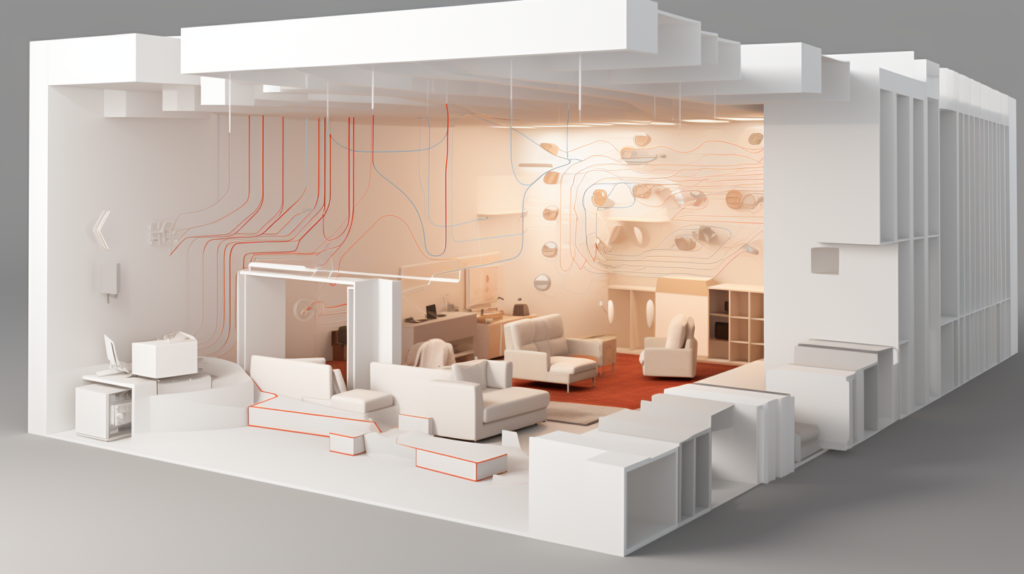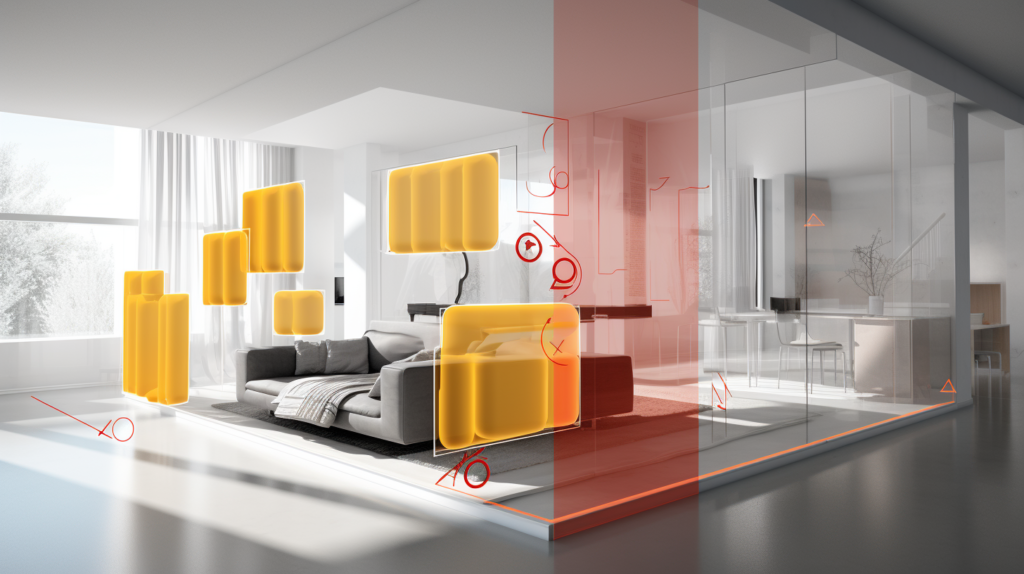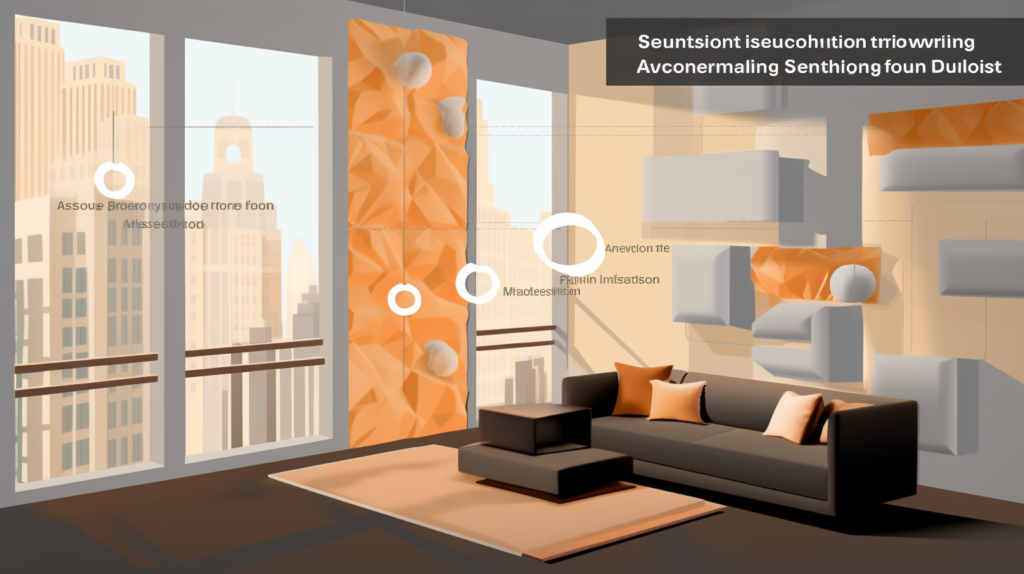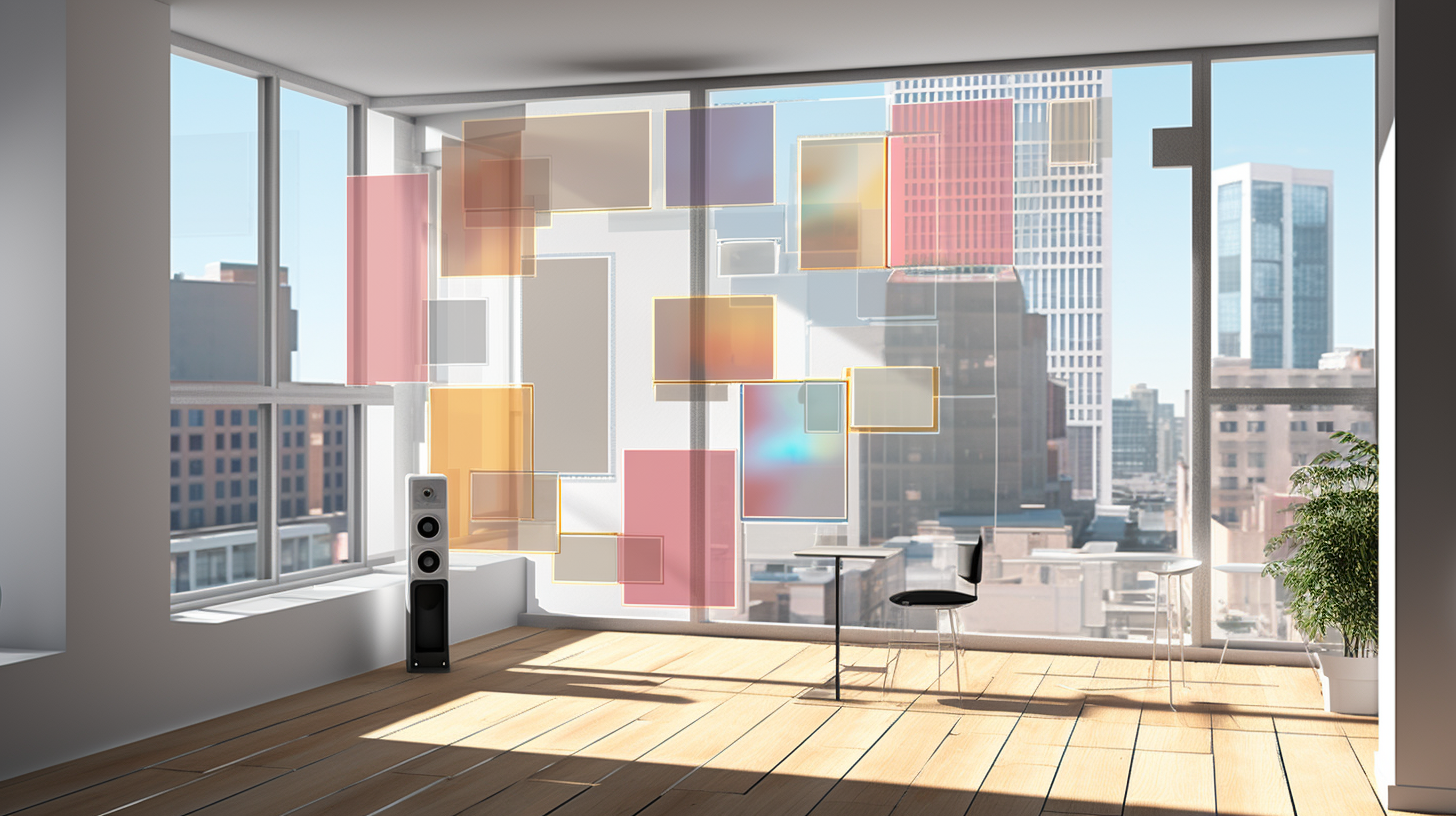The constant roar of traffic outside your apartment window.
The thumping bass from your neighbor’s late night parties.
The endless hum of noisy appliances and HVAC systems.
In our modern world full of cacophonous sounds, finding ways to reduce noise pollution and achieve some peace and quiet can seem impossible.
Acoustic panels have emerged as a popular do-it-yourself method for absorbing bothersome sounds, but how well do they really work for comprehensive soundproofing?
While acoustic panels can help reduce ambient noise levels within a room, their limitations mean effective sound blocking requires a more multifaceted approach.
Let’s dive in to understand exactly how acoustic works, its strengths and weaknesses, and how to strategically combine it with other soundproofing techniques for the best noise reduction.
Can Acoustic Panels Really Block Sound and Soundproof?

Acoustic panels have become a popular do-it-yourself method for acoustic treatment, but how effective are they really at blocking exterior noise and absorbing impactful sounds?
The Growing Need for Effective Sound Control and Noise Reduction
With the constant cacophony of sounds in our modern world, from traffic noise to loud music to noisy appliances, finding ways to reduce unwanted sound can seem like an impossible challenge.
Excessive noise coming from nearby apartments, outside traffic, and other external sources can be frustrating at best and downright disruptive at worst.
This begs the question – can acoustic panels really help absorb noise and effectively acoustically treat rooms against these pervasive noises?
Acoustic Panels Designed to Absorb Sound and Reduce Noise Levels
Acoustic panels, also referred to as acoustic or sound absorbing panels, are specially designed sound absorbing materials used to reduce echoes and reverberation within a room by absorbing audible sound waves.
They are commonly installed in recording studios, theaters, music venues and other spaces where precisely controlling the movement of sound is crucial.
In recent years, acoustic panels have also grown rapidly in popularity as an affordable, easy-to-install do-it-yourself method for acoustically treat residential homes and offices.
But how effective actually are acoustic panels at blocking exterior noise from infiltrating into a room and dampening impactful sounds?
While acoustic can certainly help deaden noise within an interior space, it also has distinct limitations that prevent it from being a comprehensive standalone solution for truly acoustically treating a room.
Understanding exactly how acoustic panels work to absorb sound, as well as their relative strengths and weaknesses compared to other materials and methods, is the key to utilizing them strategically as part of a multifaceted approach.
Are Acoustic Panels an Effective DIY Soundproofing Solution?

While useful in some ways, acoustic panels also have significant limitations for soundproofing. Understanding these is key to using them effectively.
Assessing Acoustic Panels as a DIY Soundproofing Solution
When installed properly, acoustic panels can be a useful component of an overall do-it-yourself acoustically treating strategy.
Acoustic works by utilizing porous open-cell materials to absorb audible sound waves and dissipate their acoustical energy rather than simply reflecting it, reducing overall noise and echo issues within a room.
Strategically placing panels flush on walls, ceilings, and other surfaces can dampen the sound from noises within a room by absorbing the sound waves as they bounce off of hard surfaces.
However, it is critically important to understand that acoustic panels only absorb higher frequency sounds and do little on their own to address lower frequencies or exterior noise that is transmitted directly through vibrations in the structural framing of a building.
Acoustic panels are specifically designed to control and deaden noise within a space, not completely isolate a room by blocking exterior sound from penetrating in.
For example, acoustic panels alone would not be an effective solution for reducing disruptive noise infiltration from loud traffic or construction work happening right outside a window.
This is due to the underlying physics of sound – exterior noise can still infiltrate into a room through any gaps, cracks or openings in the walls, ceiling, floor, doors, windows and vents regardless of how much interior acoustic treatment is used.
Limitations of Acoustic Panels for Soundproofing
There are also physical thickness limitations on acoustic panels that prevent them from providing unlimited sound absorption, even at higher frequencies.
The maximum realistic thickness for common acoustic panels is around 2 inches – any additional panel thickness beyond this provides rapidly diminishing returns in terms of meaningful additional sound absorption.
This inherent depth limitation means acoustic panels installed on walls and ceilings have a somewhat finite capacity for reducing the amount of impactful noises like loud music, noisy neighbors, traffic sounds, construction noise and other disruptive noises that can penetrate into a room from outside.
That said, when used properly as one component of a thoughtfully planned, multifaceted soundproofing approach, acoustic panels can be an effective, DIY-friendly first step towards noticeably quieting a noisy environment.
The judicious use of acoustic paneling to treat echo and reverberation-prone surfaces does help reduce overall ambient sound levels by preventing and absorbing some of the higher frequency sound waves bouncing around within a room’s interior space.
For truly effective noise blocking against loud exterior sounds, though, acoustic panels generally work best when paired strategically with other critical soundproofing techniques like sealing all air leaks.
Thoroughly with acoustical caulk, adding layers of mass loaded vinyl (MLV) sound barriers, improving wall insulation, isolating noise flanking pathways, and addressing all potential openings where exterior noise can infiltrate into the interior space.
How to Use Acoustic Panels to Soundproof a Room

Strategic installation in key areas can help acoustic panels reduce noise – when combined with other soundproofing methods.
Strategic Installation Tips for Using Acoustic Panels
While acoustic panels do have distinct limitations in terms of completely soundproofing a room, especially against lower frequencies and direct noise infiltration, they can still be a useful tool when installed thoughtfully in key areas as part of a comprehensive plan.
Here are some tips for utilizing acoustic panels to absorb problematic sounds and reduce ambient noise levels within a room:
First, prioritize placement by focusing on installing panels on walls or ceilings where the most bothersome noise sources originate or problematic reflective surfaces occur.
Absorbing sound energy right at the source is most effective for preventing propagation of the noise to other areas of the room.
Also treat large parallel walls or ceilings that cause flutter echoes or other annoying reverberation effects.
Second, cluster panels near noise sources by grouping panels to cover entire problem walls or ceilings adjacent to external noise sources like televisions, nearby construction sites, or noisy neighbors.
Spot treating small sections of a wall does little compared to applying acoustic panels more comprehensively.
Third, install flush to the surface by cutting panels to fit snugly against walls and ceilings with no gaps for most effective sound absorption.
While adhesive installation is ideal, panels can be installed reasonably flush using screws or high-quality mounting brackets.
Fourth, choose density and depth wisely by selecting acoustic panels that are 2 inches thick at a minimum and have a high advertised density rating to absorb lower frequencies down to at least 500 Hz for reasonably broad spectrum ambient noise reduction.
Fifth, mix panels strategically by supplementing standard panels with special bass trapping panels to handle low frequencies and cheaper acoustic tiles to increase coverage in cost-effective ways.
Combining Materials to Overcome Acoustic Panel Limitations
To most effectively reduce both exterior noises entering a room as well as contain sounds generated within, acoustic panels work best when paired strategically with other specialized soundproofing materials and noise isolation techniques.
Each of these supplemental materials and methods help overcome some of the inherent limitations of acoustic panels used entirely on their own:
Should I Combine Acoustic Panels and Other Materials for Better Soundproofing?

Pairing acoustic panels strategically with sound blocking materials and methods significantly improves overall noise reduction.
Sealing Noise Leaks Critical for Acoustic Isolation
First, consider mass loaded vinyl (MLV) as MLV is a specialized heavy, limp vinyl sheeting product infused with barium salts or other dense materials to provide excellent sound blocking even at lower frequencies.
Adding a layer of MLV over installed acoustic panels can provide substantial additional noise reduction performance, especially for direct exterior noise infiltration.
Since the high density vinyl barrier so effectively blocks the transmission of sound waves trying to pass through it at nearly all audible frequencies.
MLV also helps address direct vibration transmission which acoustic panels misses entirely.
Second, use acoustical caulk and weatherstripping as thoroughly sealing the perimeter gaps and cracks around doors, windows, electrical outlets, vents and any other openings with specialized acoustical caulk and weatherstripping is critically important.
This is because these small openings create noise leakage pathways that allow loud exterior sounds to enter a room no matter how much acoustic panels is installed on the walls and ceilings.
Isolating Flanking Pathways Key for Comprehensive Soundproofing
First, utilize isolating and resilient mounting as isolating wall framing from floor joists and resiliently mounting drywall using acoustical clips and channel can dramatically improve noise reduction by eliminating structure-borne noise transmission pathways between rooms or floor levels.
Acoustic panels alone do little to address these flanking sound transmission issues.
Second, consider soundproofing insulation as packing wall, ceiling and floor cavities with dense, sound-absorbing insulation like rockwool fitted with noise barrier mats blocks a significant amount of sound transmission between rooms or floor levels through the porous cavity materials themselves.
This also enhances lower frequency sound absorption compared to stand-alone acoustic panels.
Strategically combining purpose-designed sound blocking materials like MLV barriers, specialized caulking, isolating techniques and sound-absorbing.
Insulation with judiciously placed acoustic panels on walls provides the most comprehensive reduction of both airborne and structure-borne noise entering a room from noisy exterior sources or loud adjacent spaces.
The absorptive acoustic panels handle mid to high frequency interior noise and echoes, while the supplemental materials address lower frequencies, vibration transmission, insulation and sealing the actual direct pathways where intrusive noises can enter the room.
Used in combination, these treatments can transform even very noisy spaces into peaceful, tranquil acoustic environments.
What Are the Key Takeaways on DIY Soundproofing with Acoustic Panels?

Understanding the realistic capabilities and limitations of acoustic panels is essential for effective soundproofing.
Key Takeaways on Using Acoustic Panels for DIY Soundproofing
In summary, here are some of the essential key points for homeowners and renters to understand about using acoustic acoustic panels for do-it-yourself soundproofing projects:
First, understand that acoustic panels are specifically designed to absorb mid to high frequency interior sound and reduce problematic reverberation and echoes within a room – they do not actually block exterior noise from penetrating into a space.
Acoustic Treatment Not Enough Alone for Soundproofing
Second, recognize that when installed completely flush to surfaces, acoustic panels can help dampen ambient noise levels by absorbing sound waves bouncing around internally.
But have significant limitations reducing impactful external low frequency and vibration sounds being transmitted directly through walls, floors, ceilings, doors and windows.
Combining Acoustic Panels with Other Soundproofing Methods
Third, realize that to make a noticeable reduction in disruptive noises like loud music, noisy neighbors, traffic, construction sounds, etc.
coming from outside a room, acoustic panels need to be installed strategically in problem areas and paired thoughtfully with sealing products, sound barriers and insulation.
Fourth, understand that thoroughly sealing all potential cracks, gaps and openings with acoustical caulk and weatherstripping is critical, since these small openings allow loud exterior noises to enter regardless of interior acoustic installation.
Fifth, recognize that adding mass loaded vinyl sheets as an additional layer over installed panels addresses lower frequencies and structurally transmitted vibrational sounds that acoustic panels miss entirely on their own.
Sixth, note that there are diminishing returns on thicker/denser acoustic panels beyond about 2 inches depth – additional thickness over this adds little extra meaningful sound absorption.
Realistic Expectations with Acoustic Foam Panels
Finally, realize that for preventing loud, disruptive exterior noise from entering a room, acoustic foam panels help reduce echoes but should be combined with caulking, sealing, insulating, sound barriers and vibration isolation techniques for meaningful soundproofing.
With reasonable expectations and proper installation as part of a comprehensive plan, acoustic foam panels can be an affordable, aesthetically pleasing way to absorb bothersome echoes and reduce overall ambient noise levels within a room’s interior.
However, creating true acoustic isolation against impactful external noises like traffic or construction requires carefully sealing, insulating and supplementing panels with other specialized soundproofing products and structural techniques.
Addressing the limitations of foam panels allows DIYers to transform noisy residential and office spaces into peaceful, serene acoustic environments.
Conclusion
In conclusion, acoustic foam panels can be a useful component of an overall soundproofing strategy when their capabilities and limitations are properly understood.
While able to absorb problematic mid-to-high frequency reverberation and echoes within a room, acoustic panels alone cannot block exterior noise or address underlying structural transmission issues.
True acoustic isolation requires pairing absorptive foam treatment with air-sealing, dense sound barriers, vibration damping, and insulation.
With realistic expectations of their performance, DIYers can install acoustic panels strategically along with other specialized soundproofing products and techniques to significantly transform even very noisy residential spaces into peaceful, tranquil havens.
While more complex and multifaceted than just slapping up some foam tiles, comprehensive soundproofing both reduces unwanted noises within a space and blocks impactful external sounds from intruding in.
